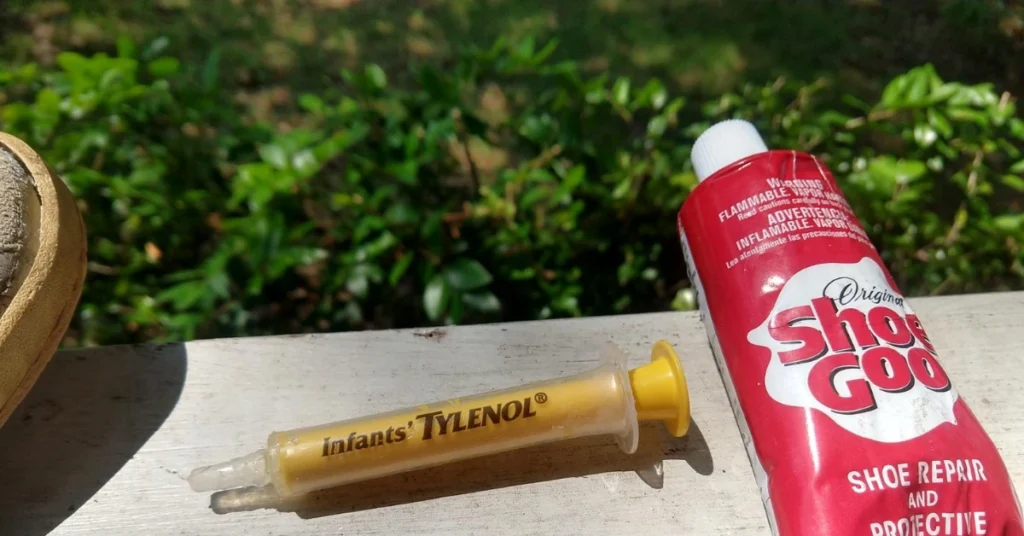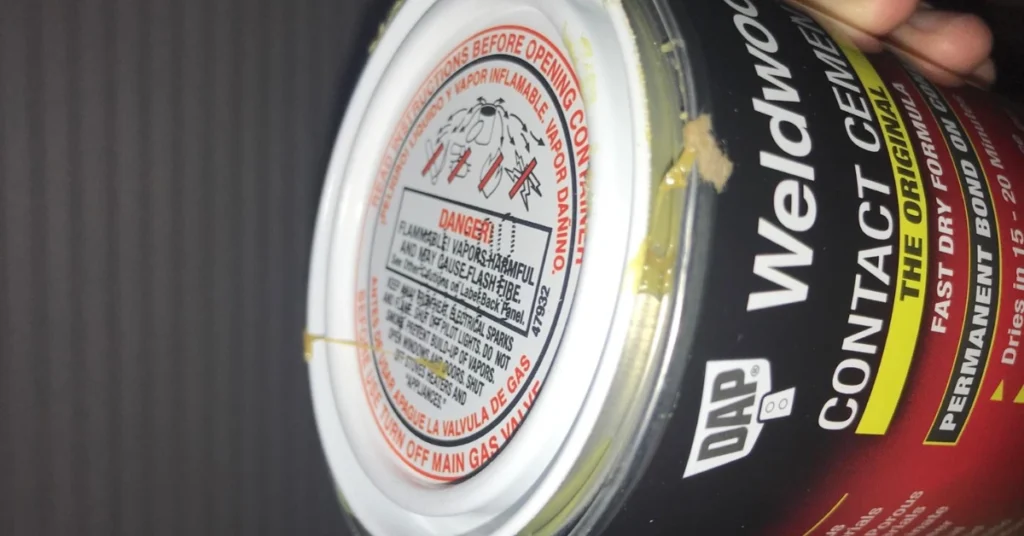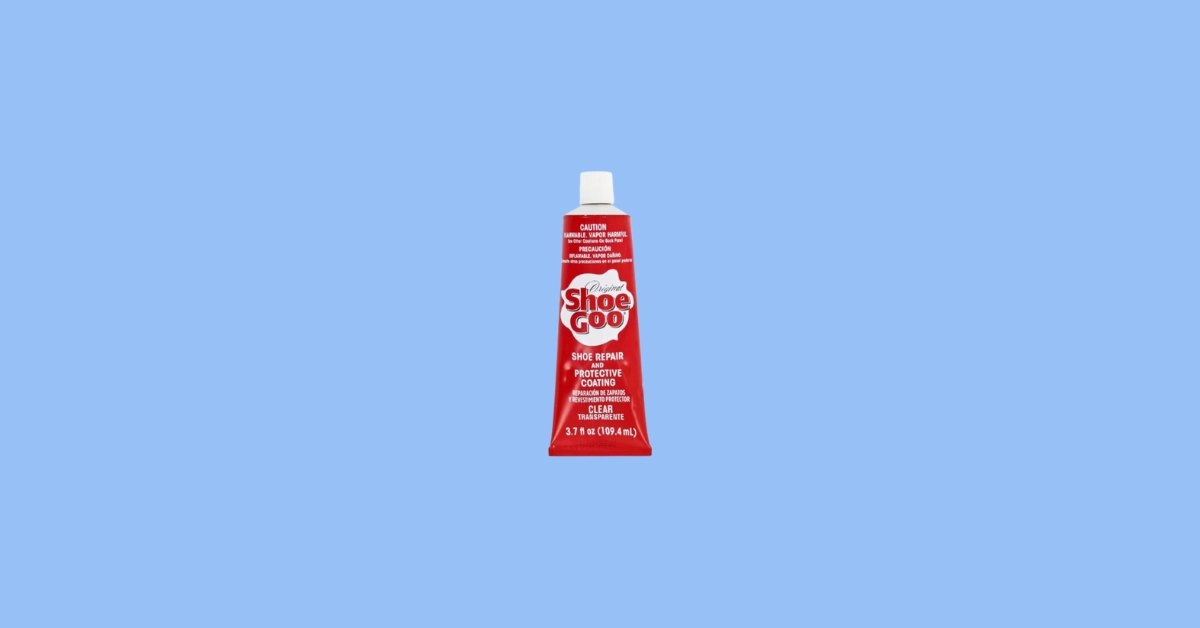Shoe Goo is a footwear repair adhesive with a water barrier protection facility. It can be used on leather, rubber, vinyl, or canvas footwear.
It can also create traction on some gears, which is beneficial.
DAP Weldwood Original Contact cement is a professional-grade, premium-quality adhesive used on wooden items, furniture, countertops, doors, windows, and other projects.
Read More: Gorilla Glue vs. Shoe Goo
Article Highlights
- Shoe Goo is a shoe repair and projective coating adhesive.
- DAP Weldwood Original Contact cement is a premium-quality, neoprene-based adhesive.
- Shoe Goo can be used on shoe repair and traction-producing projects.
- DAP Weldwood Original Contact cement can be used for furniture repairs, carpet projects, wooden projects, DIY projects, professional uses, and more.
Shoe Goo vs. Contact Cement
Shoe Goo is a shoe repair and protective coating adhesive. It permanently repairs and seals soles, heels, and minor damages.
Shoe Goo claims to be stronger than glue. Its strong bonding formula ensures that it adheres to surfaces extremely well.
Besides, it is a fast-drying, clear adhesive solution for damaged heels, worn soles, and footwear.
Another product is DAP Weldwood Original Contact Cement. It has a premium quality, brush-grade finish, and a neoprene-based formula that intensively bonds and gives a long-lasting result.
DAP Weldwood meets the requirements of professional users. It could be a good product for professional use.

Bonding Strength
Shoe Goo offers a superior bond on surfaces. This clear glue has a strong bonding formula that sticks to the surface extremely well to seal and repair permanently.
It can be used on any kind of footwear to extend its longevity. In addition, Shoe Goo forms a clear and watertight barrier, which is ideal for long-lasting repairs and wear in wet conditions.
Shoe Goo is resilient and waterproof, ensuring the bond won’t get damaged in wet areas.
DAP Weldwood Contact Cement offers premium-quality results and meets professional standards. It is also a high-strength adhesive, making it ideal for most projects.
The solvent-based and quick-grab formula makes it the ideal one.
Color
Shoe Goo adhesive is clear, making it more versatile. DAP Contact cement is also transparent. These products can be used on different surfaces.
Setting time
Shoe Goo is a fast-drying adhesive that can be used for different applications. It’s waterproof and dries within 24 hours.
It can also permanently bond worn rubber soles, small holes, damaged heels, and anything else related to footwear.
DAP Contact cement is also a fast-drying adhesive. It dries only in 15-20 minutes. You can use this adhesive for any instant repair.
Read More: E6000 vs. Shoe Goo
Benefits
Shoe Goo is a valuable adhesive for footwear repair. Its best part is that it extends the life of the gear. It’s perfect for patching small holes and other damages instantly.
Besides, it repairs, protects, and builds a permanent bond. The protective coating protects against water penetration, making it waterproof.
You can use it on gear like galoshes, waders, and rubber boots to make them longer-lasting.
Shoe Goo is a one-tube product but can be used in many ways. It creates traction, so it’s compatible with gear like a skateboard to provide extra traction and enhance its longevity.
This is a durable and economical shoe repair solution that makes it an ideal one.
DAP Weldwood Contact Cement has many unique qualities. It resists water and most chemicals and holds a permanent bond on contact.
In addition, this contact cement can be used on porous and non-porous materials and on exterior and interior projects.
Besides, it is easy to spread, making it useful for large surfaces. This contact cement provides water resistance and a high-heat facility after completely drying.
It meets the professional requirements, making it an ideal industrial product.
Compatible materials
Shoe Goo adhesive works on leather, canvas, vinyl, and rubber. It’s versatile enough to repair any kind of shoes instantly.
Another product is DAP Weldwood Contact cement, which can be used on porous and non-porous materials, including wood, leather, rubber, metal, veneer, laminate, plastic, carpet, and more.
It can also be used on interior and exterior surfaces, which is a plus.

Applications
Shoe Goo adhesive repairs shoes, damaged heels and soles, small holes, and similar damage. It forms a protective coating on the surface and makes your gear longer-lasting.
Besides, it creates a barrier against water to prevent water penetration, making it waterproof so you can use it in wet conditions without worrying about any damage.
It can also produce traction and be used on gears like skateboards.
The DAP Contact cement can be used on both interior and exterior projects. It is used for woodworking and leatherworking, doors, windows, furniture repairs, carpet repairs, and plastics as well.
Caution
Shoe Goo is flammable and harmful as a vapor. Therefore, it must be used in a well-ventilated area and must be used with care in a closed place.
If not, try to use an exhaust fan to remove vapor.
DAP Contact cement is liquid and flammable. It’s also harmful as a vapor. So, make sure to take precautions and use it in an open space.
Also, strictly avoid using this glue near heat or direct flame.
Editor’s Note
To sum up, these two products have some similarities. Both Shoe Goo and DAP Contact cement are flammable and vapor-harmful.
They have a waterproof facility that makes it more valuable. Besides, they can be used on a common material, which is leather.
However, unlike Shoe Goo, DAP Contact cement is compatible with many materials.
So, contact cement is more versatile. It also meets professional user requirements.
DAP Weldwood Contact Cement is the better choice.


